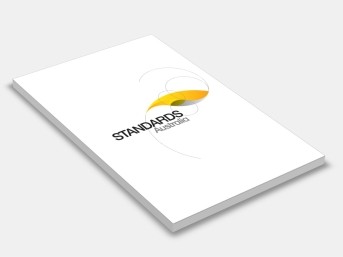AS 1735.19:2019 Lifts, escalators and moving walks, Part 19: Safety rule for the construction and installation of lifts - Lifts for the transport of persons and goods - Remote alarm on passenger and goods passenger lifts
Standards Australia
The objective of this Standard is to specify requirements for alarm systems for all types of passenger and goods passenger lifts. This Standard also deals with the minimum information to be provided as part of the instruction manual related to maintenance and the rescue service.
This Standard covers the significant hazard relevant to lifts when they are used as intended and under the conditions foreseen by the installer/manufacturer, i.e. entrapment of users due to the lift not working properly.
This Standard is not applicable to alarm systems intended to be used to call for help in other cases, e.g. heart attack, seeking information.
This Standard is identical with, and has been reproduced from, EN 81‑28:2018+AC: 2019, Safety rules for the construction and installation of lifts ─ Lifts for the transport of persons and goods ─ Part 28: Remote alarm on passenger and goods passenger lifts.
As this document has been reproduced from an International Standard, the following applies:
(a) In the source text “this European Standard” should read “this Australian Standard”.
(b) A full point substitutes for a comma when referring to a decimal marker.
Australian or Australian/New Zealand Standards that are identical adoptions of international normative references may be used interchangeably. Refer to the online catalogue for information on specific Standards.
The terms “normative” and “informative” are used in Standards to define the application of the appendices or annexes to which they apply. A “normative” appendix or annex is an integral part of a Standard, whereas an “informative” appendix or annex is only for information and guidance.
First published as AS 1735.19:2019.
This European Standard applies to alarm systems for all types of passenger and goods passenger lifts, in particular those covered in the EN 81 series.
This European Standard also deals with the minimum information to be provided as part of the instruction manual related to maintenance and the rescue service.
This European Standard deals with the following significant hazard relevant to lifts when they are used as intended and under the conditions foreseen by the installer/manufacturer:
— entrapment of users due to the lift not working properly.
This European Standard is not applicable to alarm systems intended to be used to call for help in other cases, e.g. heart attack, seeking information.
This European Standard is applicable to alarm systems used for lifts manufactured and installed after the date of publication by CEN of this standard. However, this European Standard can be taken into account when applied to existing lifts.
EN 81-70 gives additional requirements for persons with disabilities (e.g. inductive loop, alarm button).
Contents:
European foreword
Introduction
1: Scope
2: Normative references
3: Terms and definitions
4: Safety requirements and/or protective measures
5: Information
6: Verification of the safety requirements and/or protective measures
7: Marking
Annex A: (normative) Typical 2-way communication between lift(s) and rescue service
Annex B: (informative) General information for the operation of rescue services
Annex ZA: (informative) Relationship between this European Standard and the essential requirements of Directive 2014/33/EU aimed to be covered
Lift Installations.
Association of Consultants in Access Australia; Australasian Fire and Emergency Service Authorities Council; Australian Building Codes Board; Australian Chamber of Commerce and Industry; Australian Elevator Association; Australian Industry Group; Communications, Electrical and Plumbing Union - Electrical Trades Division; Engineers Australia; Lift Engineering Society of Australia; Property Council of Australia.
